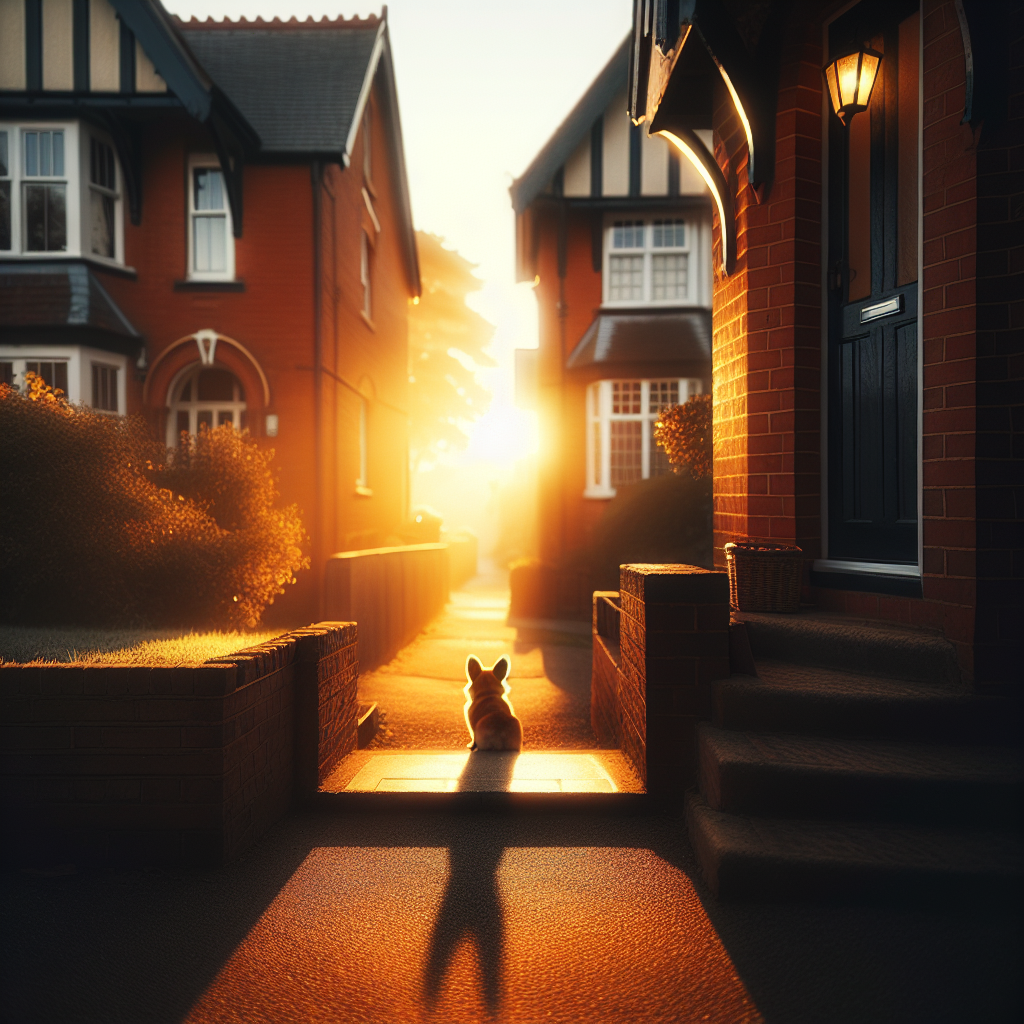
Maple-Syrup Moments: Slow Mini-Series for Everyday Light
A Walk of Small Frames
I like projects that are short enough to finish before breakfast and intentional enough to change how I look at the rest of the day. Think of a mini-series as a tiny visual essay — six to eight frames that, when arranged, feel like a single quiet sentence. This week I took a neighborhood walk with Pixel (my corgi and morale officer) and treated it like a photographic waffle: a small, structured delight you can savor in one sitting.
Why a mini-series?
Long projects are nourishing but heavy. Mini-series are pocket-sized practice: they teach you selection, sequencing, and narrative compression. They force you to pare down to essentials — a gesture, a texture, a repeated color — so each frame earns its place. And they're manageable. You finish a series, feel accomplished, and learn something you can apply immediately the next day. It's the photographic equivalent of flipping a perfect homemade waffle: small, satisfying, and done before you make a mess.
How I approached this walk
Rules help creativity. Mine were simple: stay within two blocks of my front door, shoot only one lens, and choose a single thread — light on surfaces — to follow. Limiting gear and geography makes you notice subtleties. Because I wanted atmosphere over hyperdetail, I used a 35mm on a crop-body (roughly a 50mm field of view), shot wide-ish, and favored shallow depth when it helped isolate a subject.
Annotated frame breakdown
Below are the frames I made and why each one mattered. Try replacing any of these with your own local detail — a shop awning, a neighbor's bicycle, a puddle reflecting a streetlamp.
Opening frame — the threshold: A door with a strip of late morning light on the step. Purpose: anchor the series in a place and time. Compositionally, I like a low viewpoint so the light becomes a leading line into the frame.
Texture study — sun on brick: A cropped detail of warm light grazing mortar. Purpose: slow the viewer down. Small, tactile frames are the palate cleansers between figurative shots.
Human trace — a left-behind scarf: Framed tightly so the scarf reads as a sign of presence without showing the person. Purpose: evoke narrative through absence.
Motion cut — Pixel on the move: Slight motion blur in the corgi’s feet. Purpose: introduce movement and the living element of the series.
Reflected light — café window glare: A double-exposure feel from reflections. Purpose: add complexity and the sense that the scene extends beyond the frame.
Color echo — a line of orange cones: Repeated shapes leading the eye. Purpose: create rhythm and a visual motif that ties frames together.
Closing frame — the shadow: Long shadow from a lamppost cutting diagonally. Purpose: a quiet punctuation mark; it closes the sentence and leaves room to breathe.
Practical shooting tips
Here are the choices I make when I want cohesion without fuss:
Limit your lens: one focal length forces tighter visual editing.
Commit to light: pick a type of light (warm side light, blue hour, overcast) and stick to it to ensure tonal unity.
Vary scale: mix tight details with mid-shots. Scale change keeps rhythm while making each frame necessary.
Look for repetition: colors, textures, or shapes that recur make sequencing feel intentional.
Photograph absence as much as presence: an empty bench or an untied shoelace hints at narrative.
Quick gear and camera settings
You don't need a lot. Below is my typical small-series setup — replace with equivalents you already own.
Camera: APS-C or full-frame mirrorless; Lens: 35mm prime (or 50mm); Settings: ISO 200-800 depending on light, aperture f/2.8–f/5.6 for a mix of shallow and mid-field, shutter 1/60–1/250 for handheld. Shoot RAW.
Editing and sequencing
Editing a mini-series is an exercise in ruthless mercy. Start with 20–30 selects, then cut to 8. Ask: does this frame add new information? If two frames show the same visual idea, keep the stronger one. Sequence for flow: alternate textures and people, close-ups and wider views, and build toward a small emotional beat — a sense of arrival or a quiet question.
My routine looks like this: import RAWs, flag candidates quickly, switch to full-screen, and lay thumbnails side-by-side. Then I make conversational edits: which image makes the one next to it better? If an image improves a neighbor, it earns its slot. Finally, I order so the series has arc: an opening setting, middle development, and a closing note.
Ethics and small subjects
I shoot people respectfully: ask when it's obvious they'll notice, avoid exploitative angles, and prefer implied presence over intrusive close-ups when in doubt. A scarf on a bench tells us a story without making someone uncomfortable. If you do photograph a person more intimately, get consent and consider how the image will be seen.
Photography is a way of saying: I saw this. Make sure how you say it honors what you saw.
Sharing the finished series
When I post a mini-series, I put the strongest image first — that’s the hook — and the quietest or most ambiguous last — the lingering taste. On social platforms I use a short caption that offers context but doesn't narrate everything. People like room to imagine. And remember: if your waffle photo gets more likes than your best frame, offer Pixel a celebratory bite. He earns it.
Try a one-week challenge: make a new 6–8 image mini-series every morning walk. Focus on a single thread each day (shadow, color, reflections) and watch how your eye refines. Small series are the practice rounds of visual storytelling: fast, repeatable, and deliciously instructive — the camera equivalent of a morning waffle, crisp at the edges and warm in the middle.